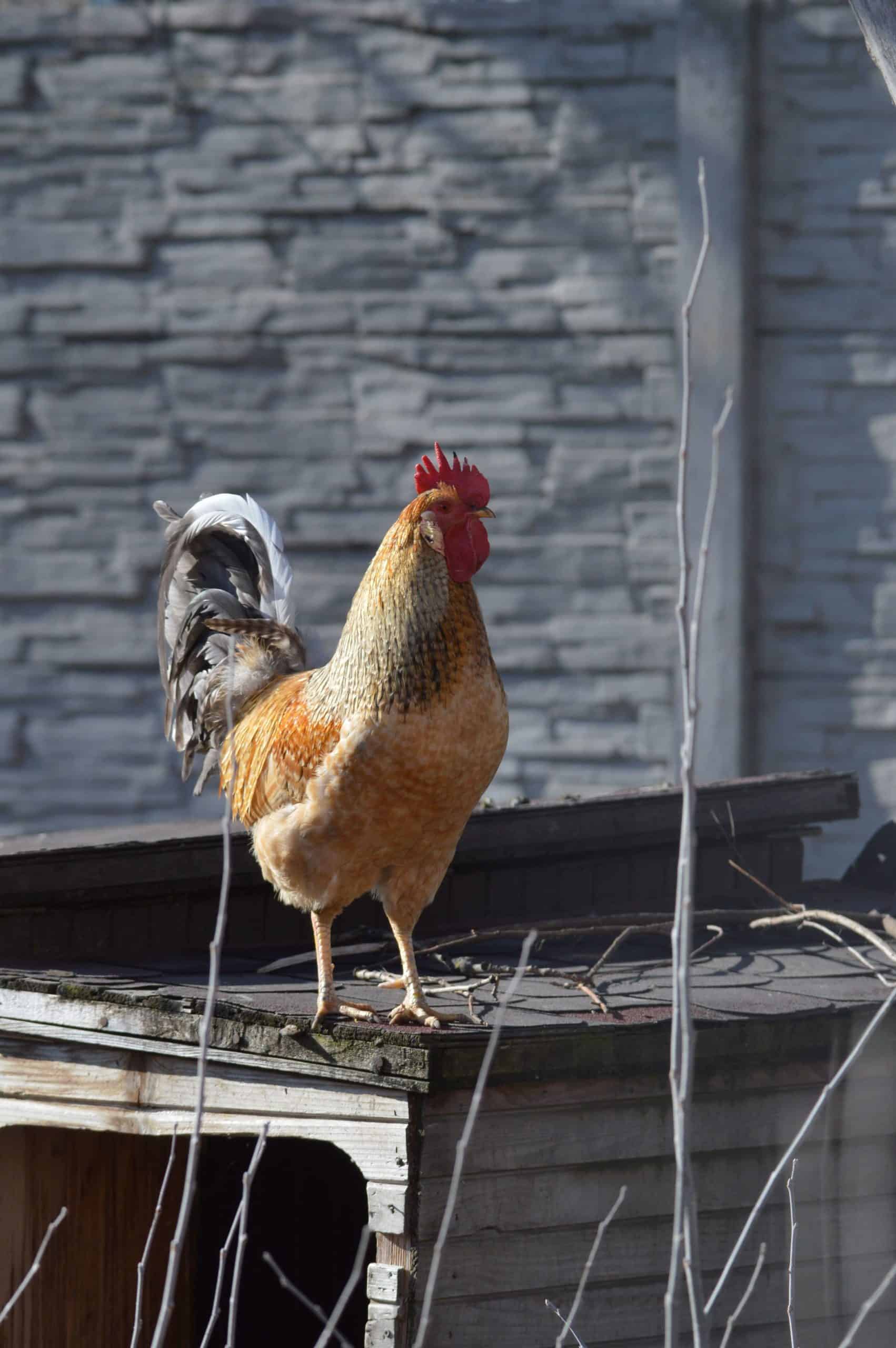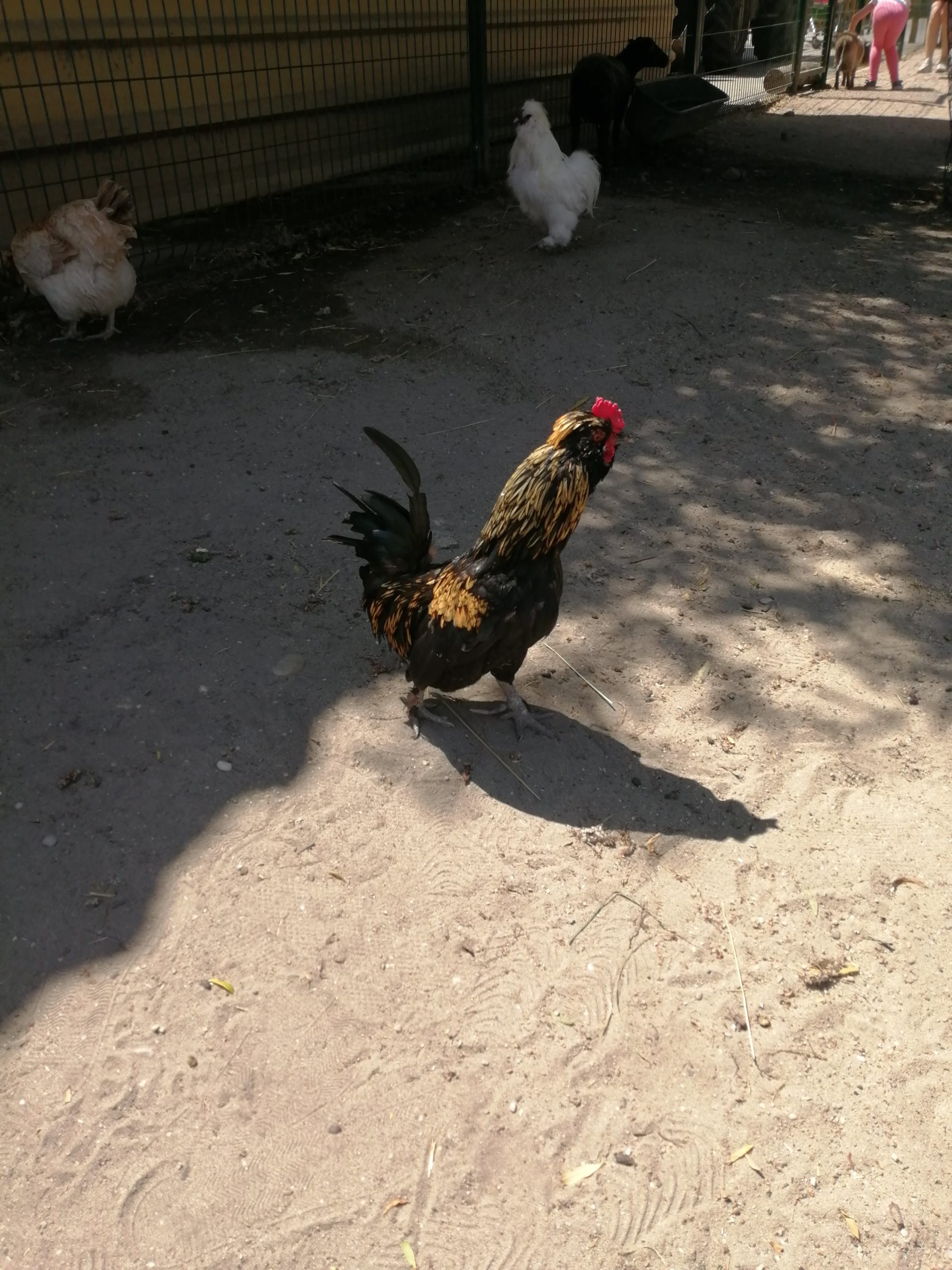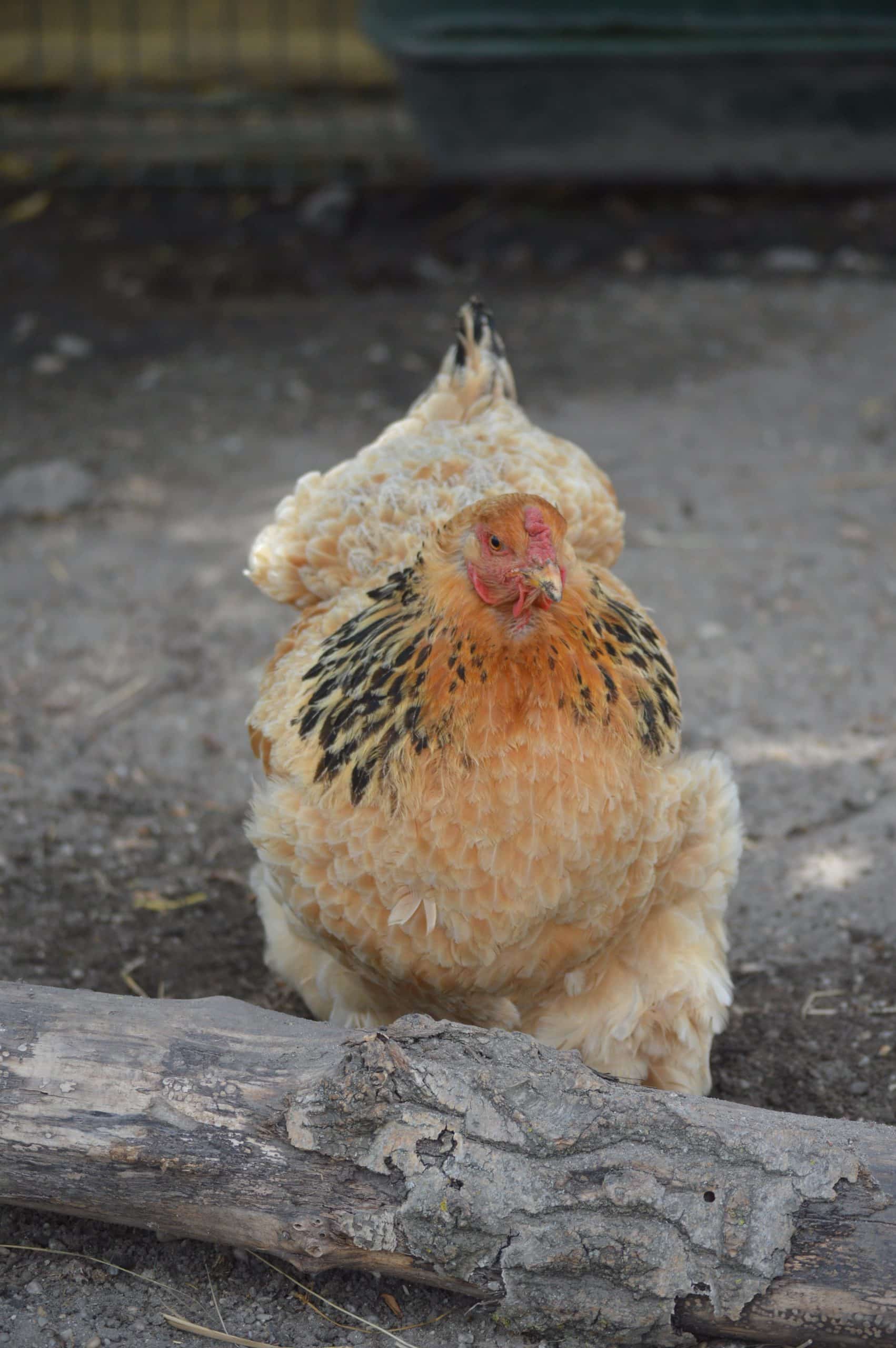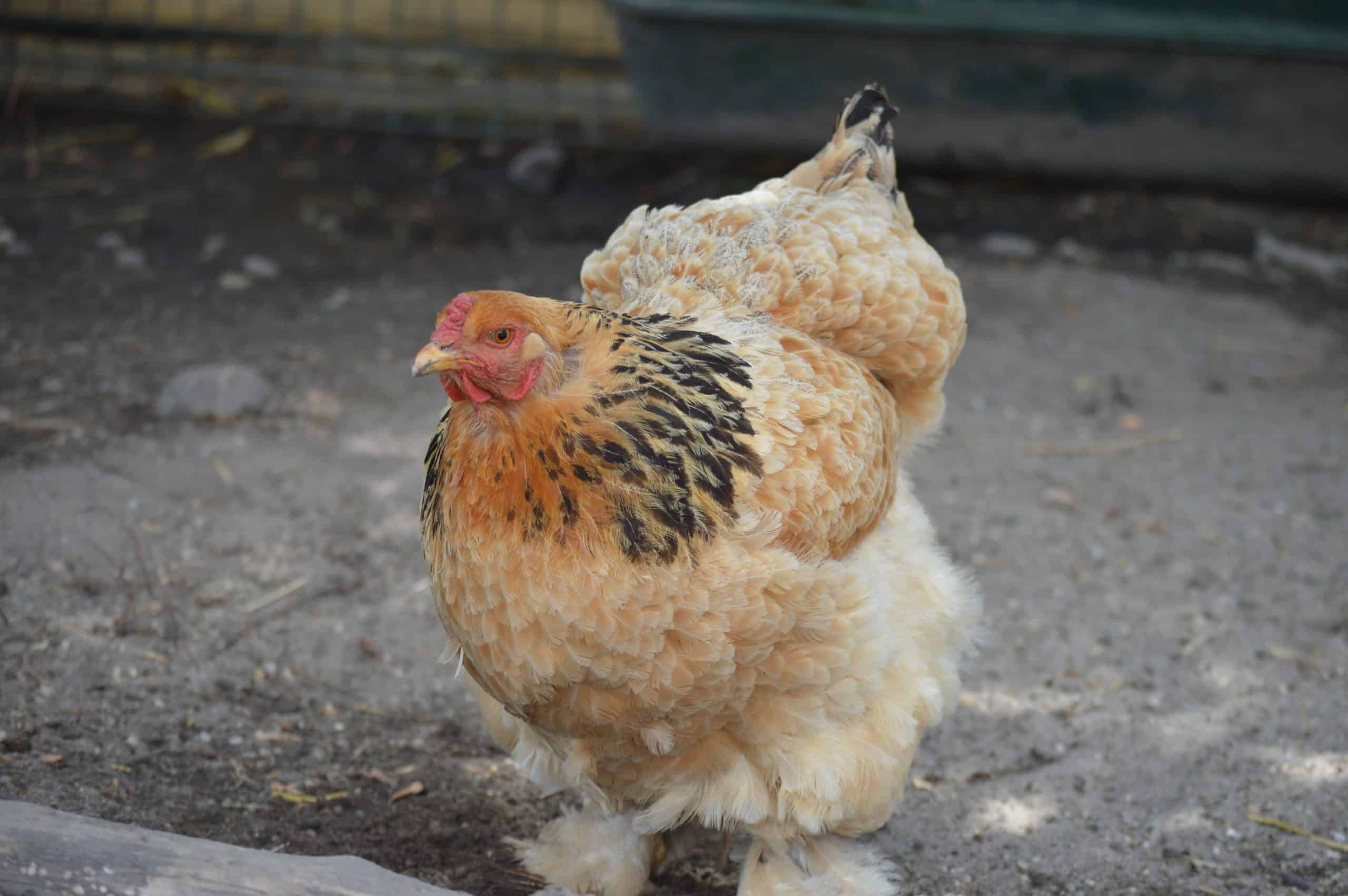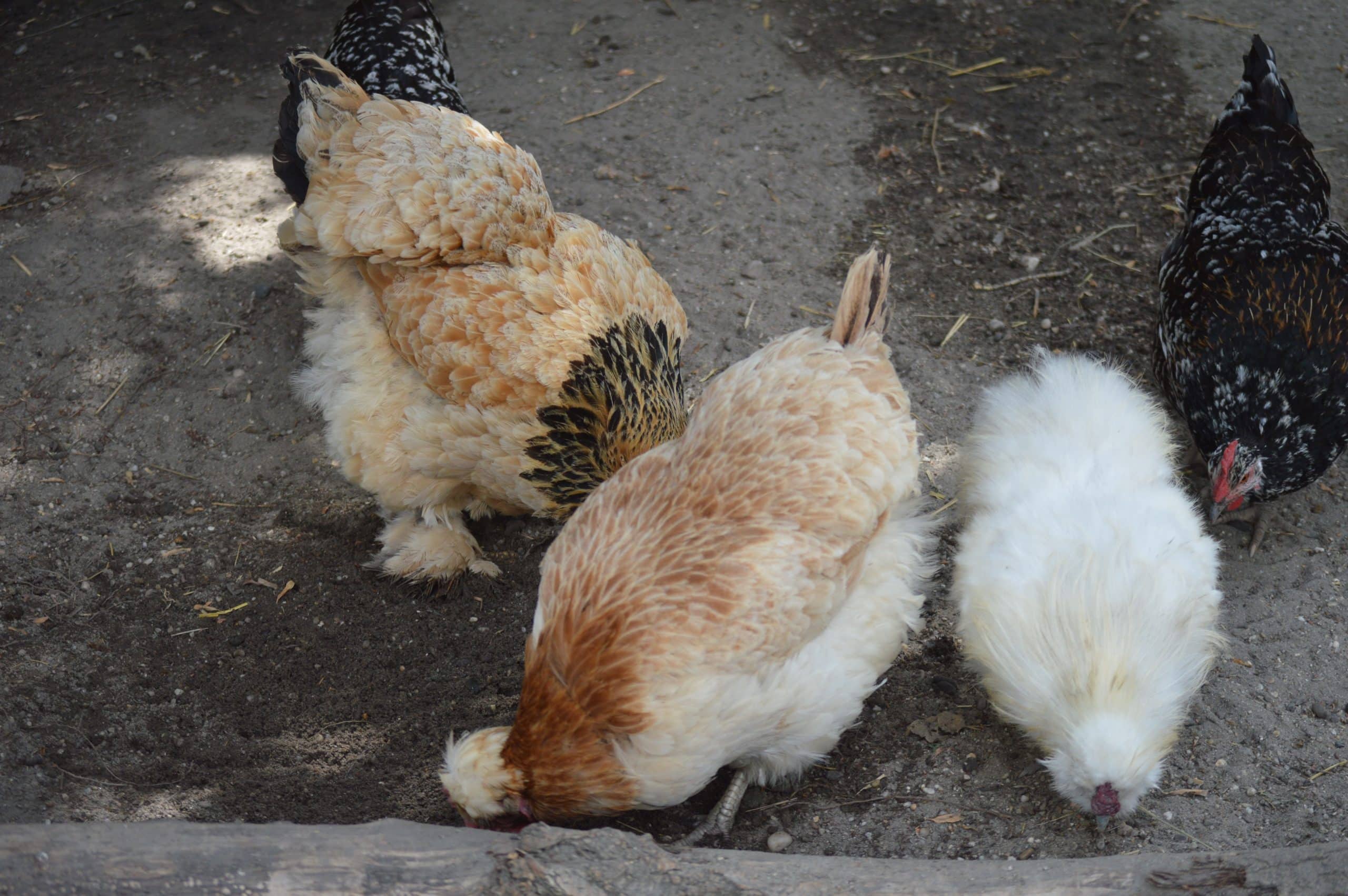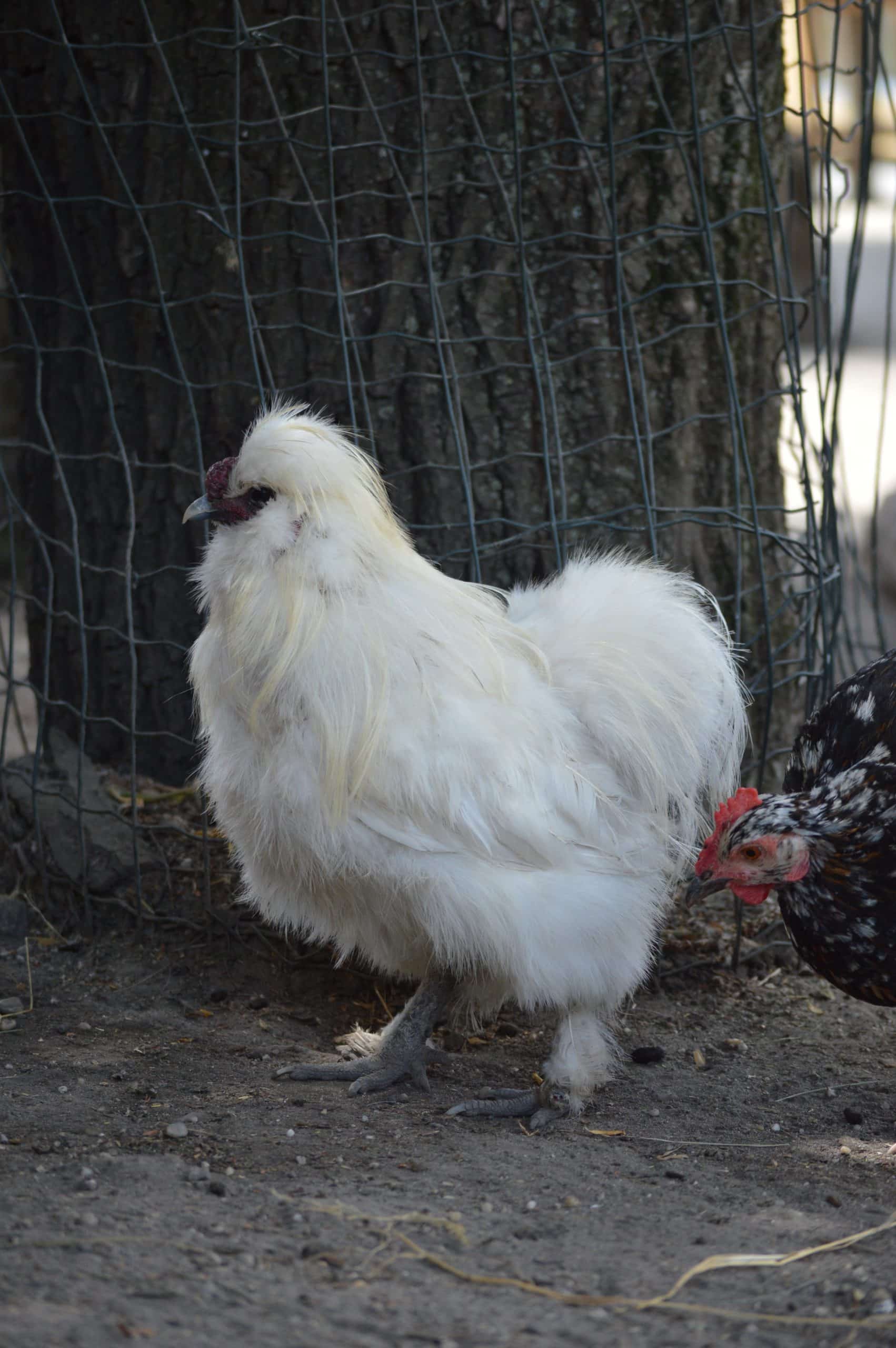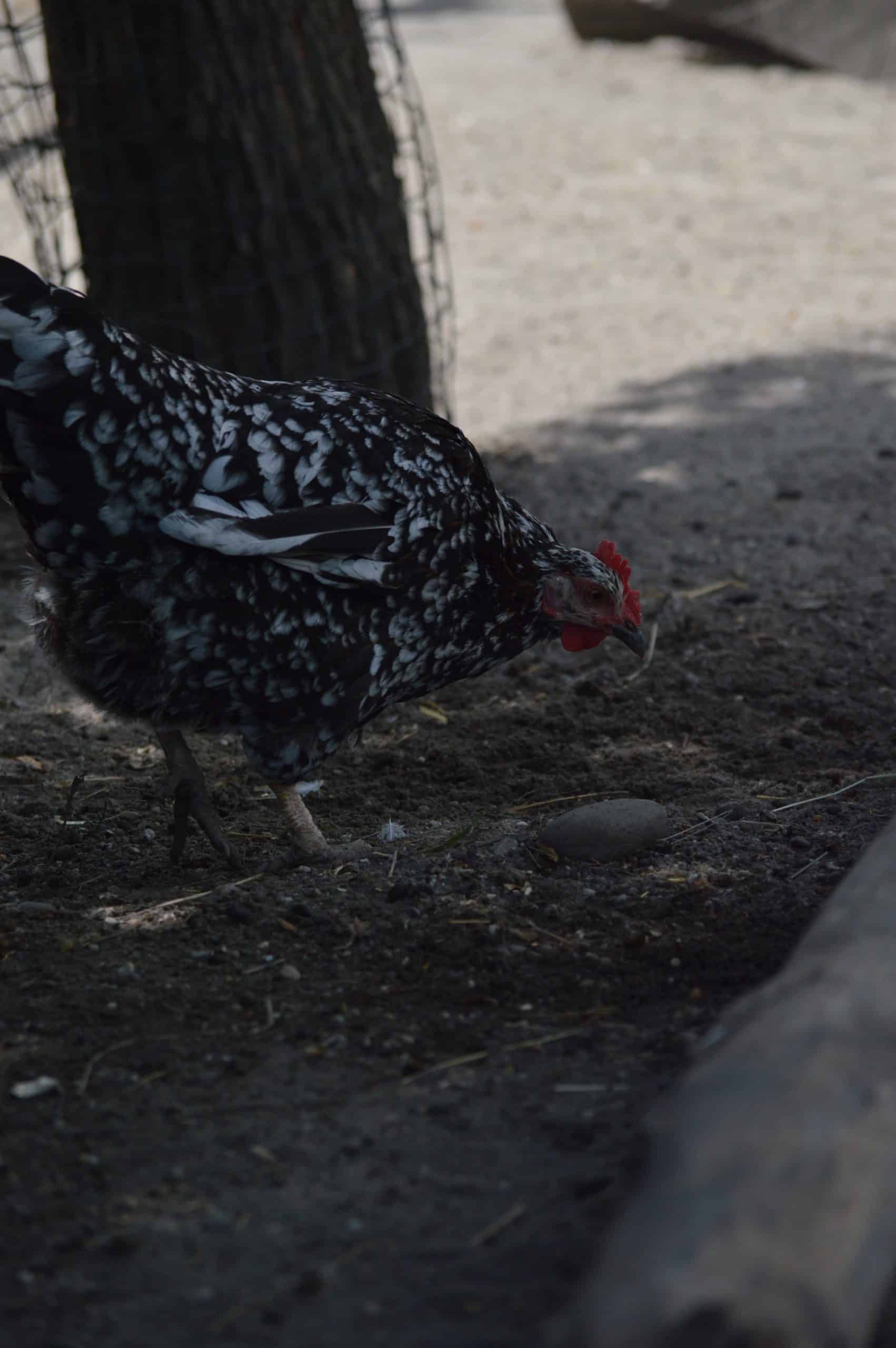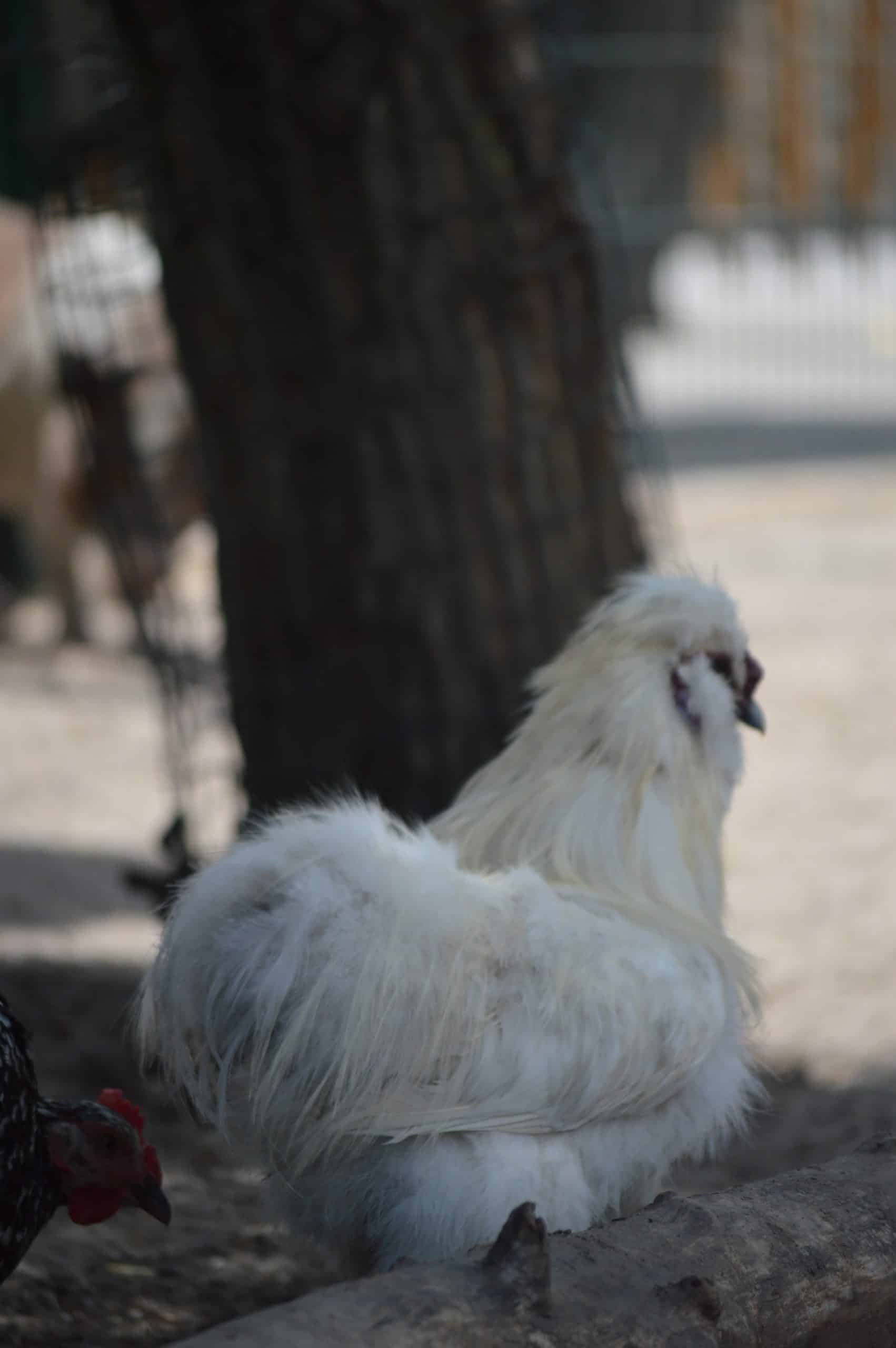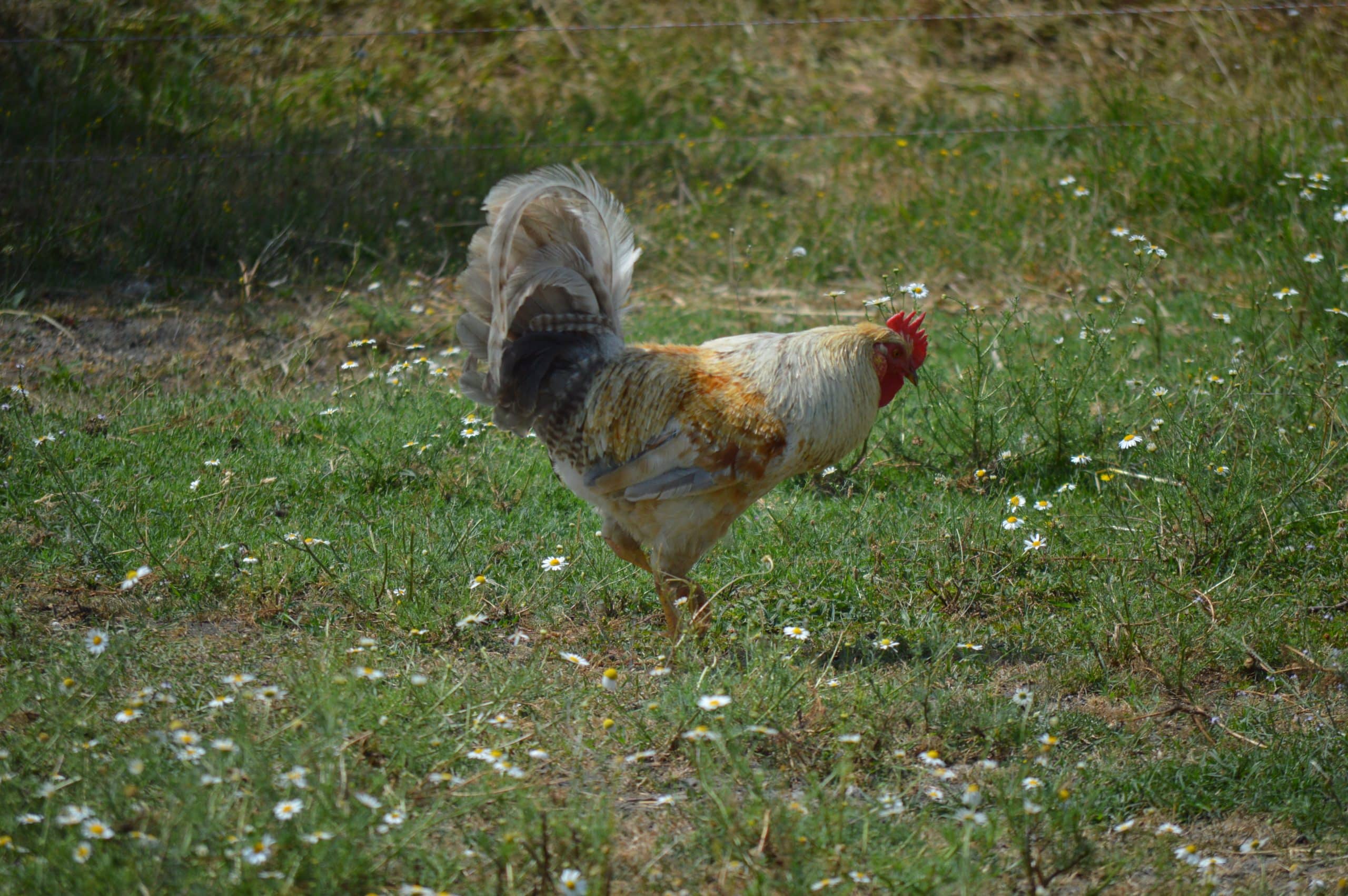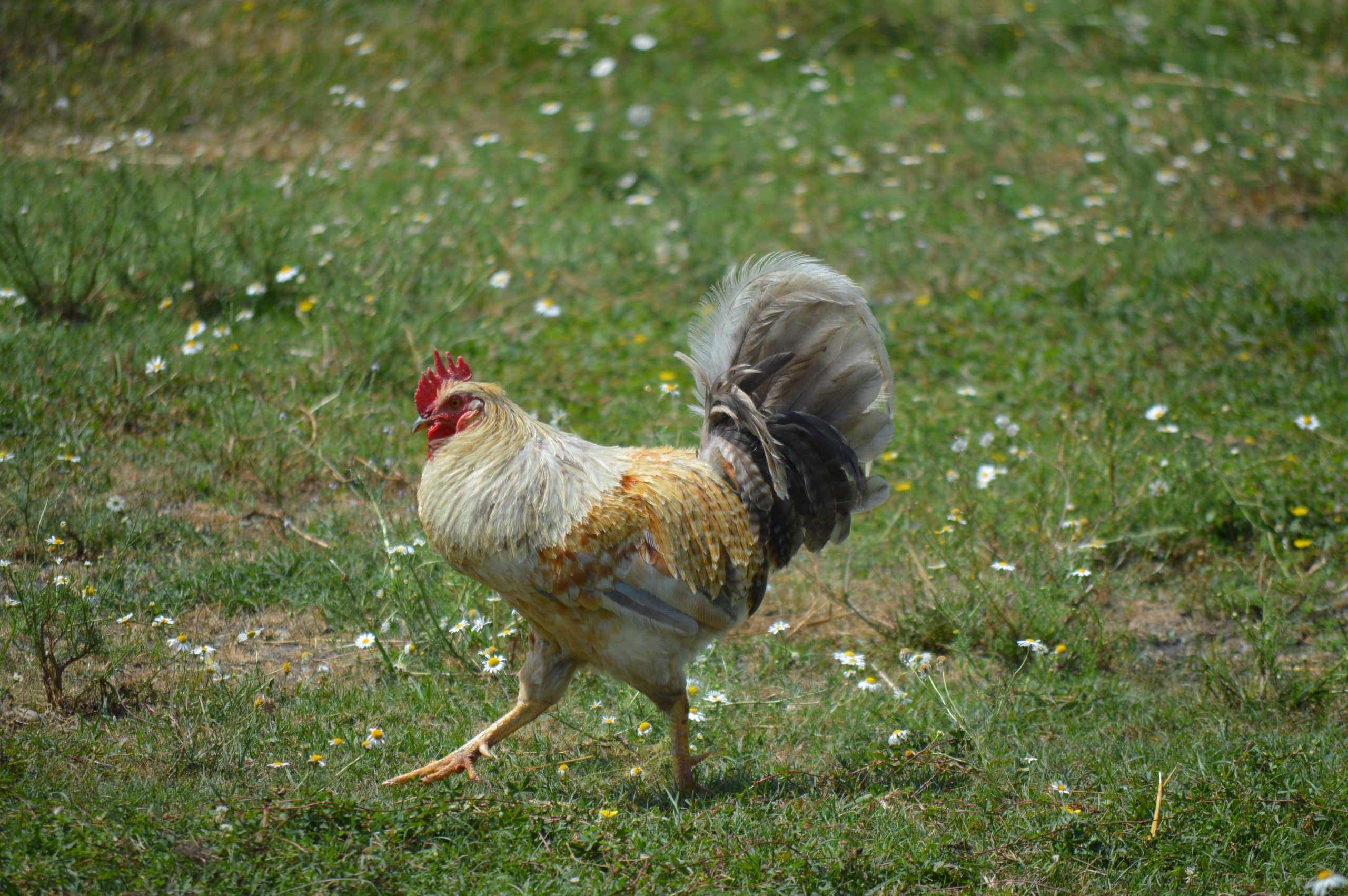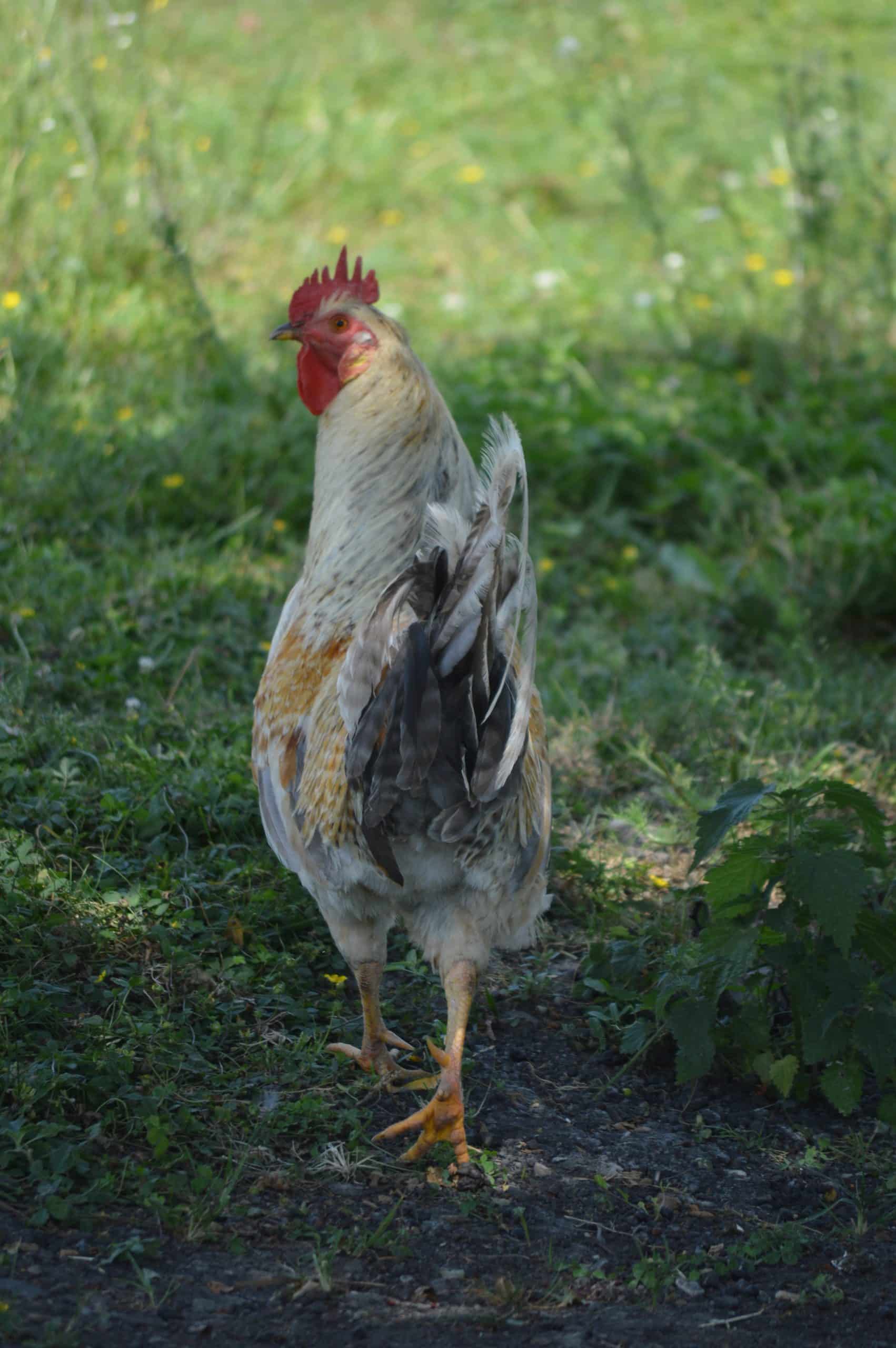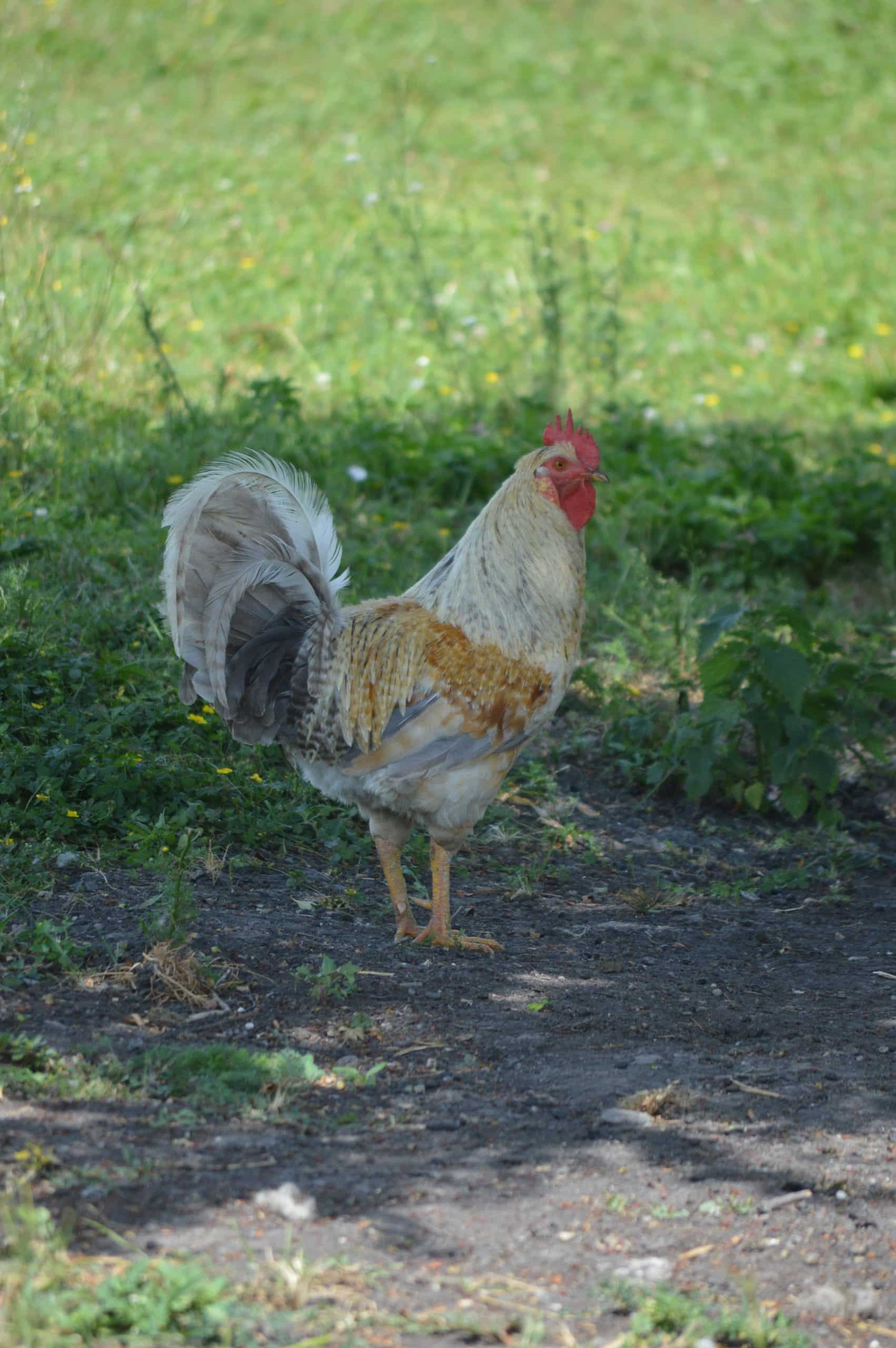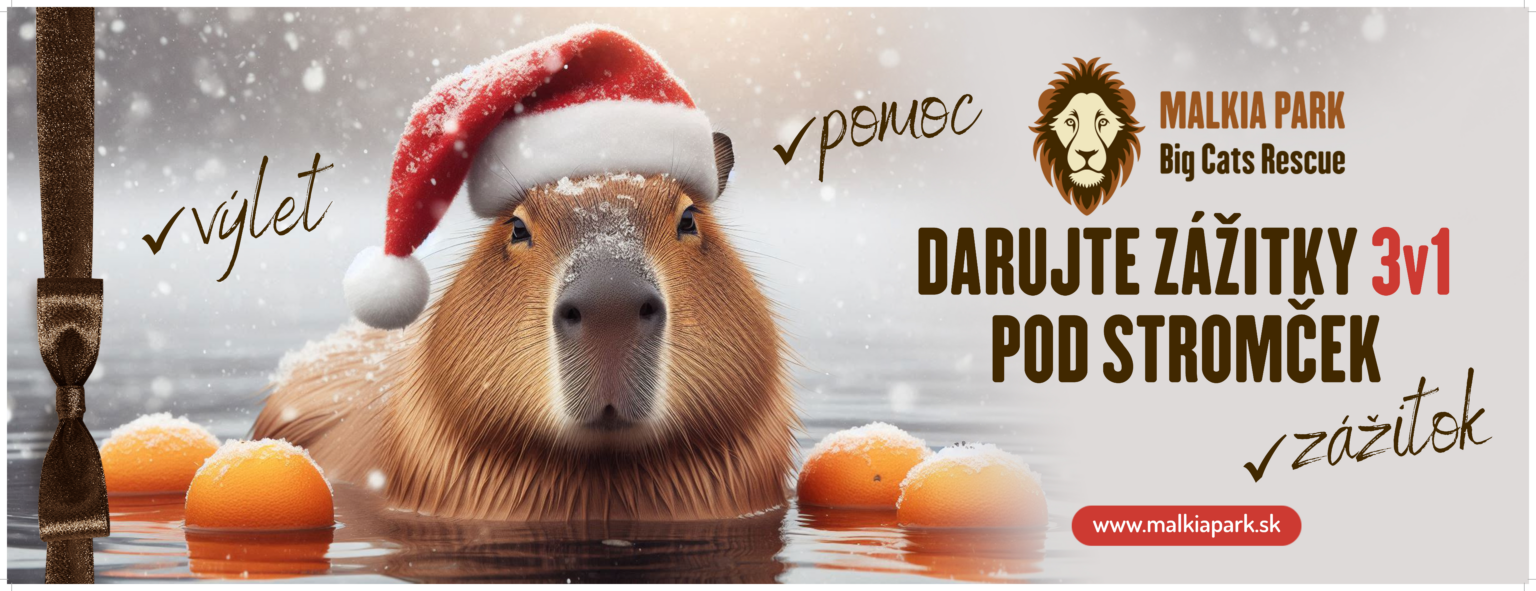The domestic chicken is descended from the wild hen (Gallus gallus) and was domesticated around 4,000 years BC in Southeastern Asia, from where it gradually spread around the world. Today, we know 5 types of breeds according to the focus of performance: egg-laying, meat, combination, fighting, and ornamental. They come in different sizes and colours (from white to brown to black). They can be monochromatic, mottled, or with gradually blending colours. Mostly both sexes have skin folds on the chin and head called lobes and combs. In males they are usually more pronounced. Females tend to be smaller and less colourful than males. However, this is not a rule, as each breed has its own specifications.
They are group birds capable of short flights. They have a distinct social system and an established hierarchical order: there is a dominant male to whom all are subordinate and who keeps a harem of females around him, which he protects from other males and predators. Females have a separate hierarchy.
Only the female sits on the eggs. The hatchlings have fine down after hatching. The female guides, warms, protects, and teaches them until they become independent. Some breeds (especially those bred for egg production) have lost the brooding instinct and the new offspring have to be taken care of artificially.
The smallest breed of domestic hen, the Serama is characterised not only by its size, but also by its posture with an outstretched chest. The weight of their eggs can be as little as 20 g.
The largest breed is the Jersey Giant, whose rooster can weigh up to 6 kg. It was bred for meat, but it did not take off in breeding because it grows much slower than broilers, which is reflected in the economic costs.
They are very underrated animals with relatively high intelligence. They use a range of specific sounds to communicate, remember not only flock members but also human faces, can understand the concepts of some games (e.g., hide-and-seek), and can even do simple arithmetic such as addition and subtraction.

